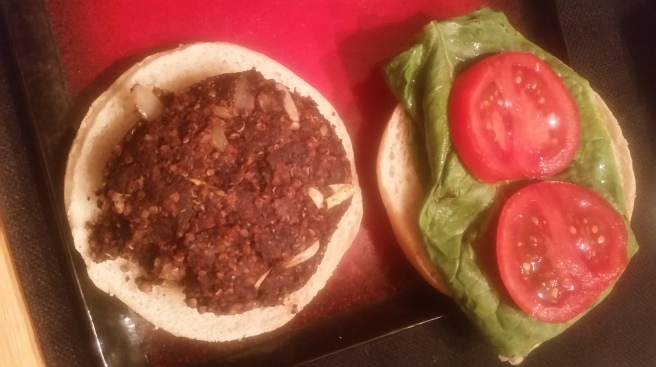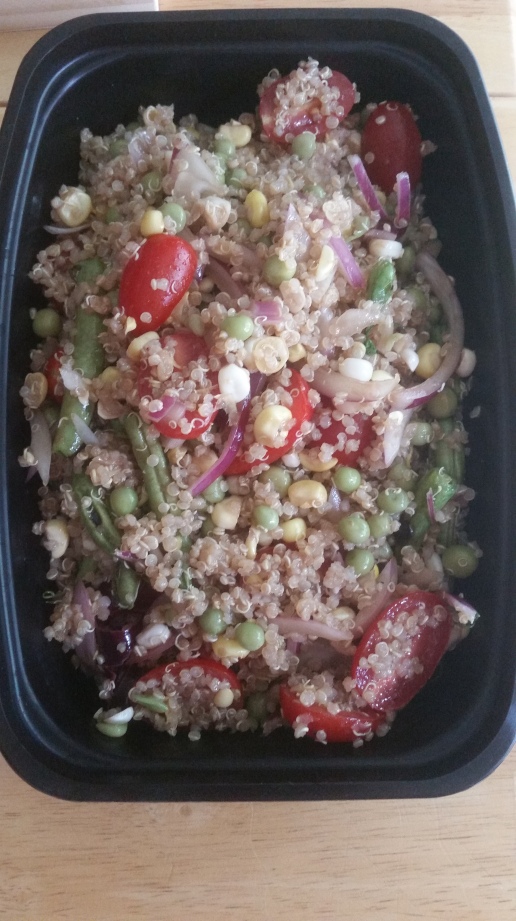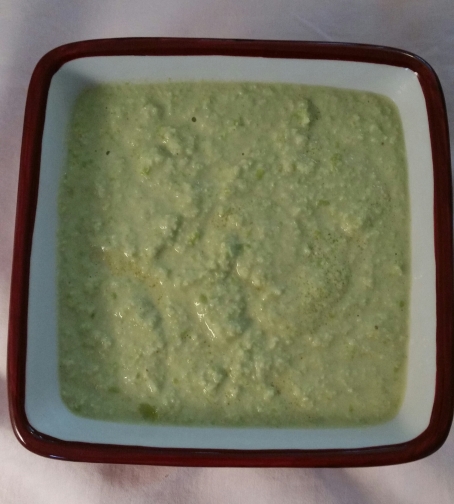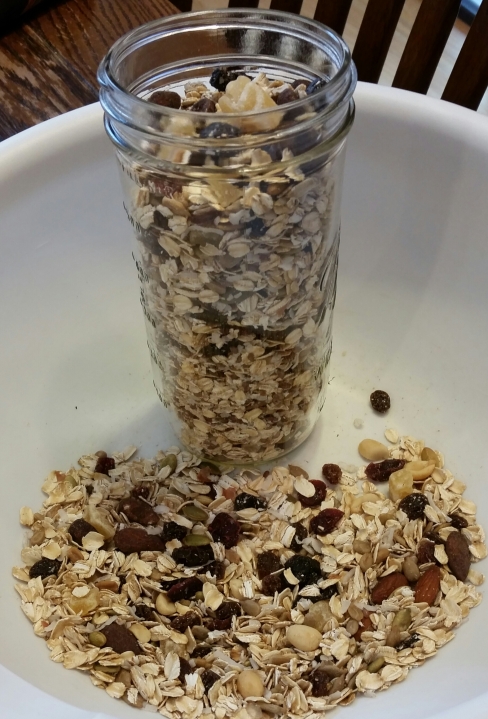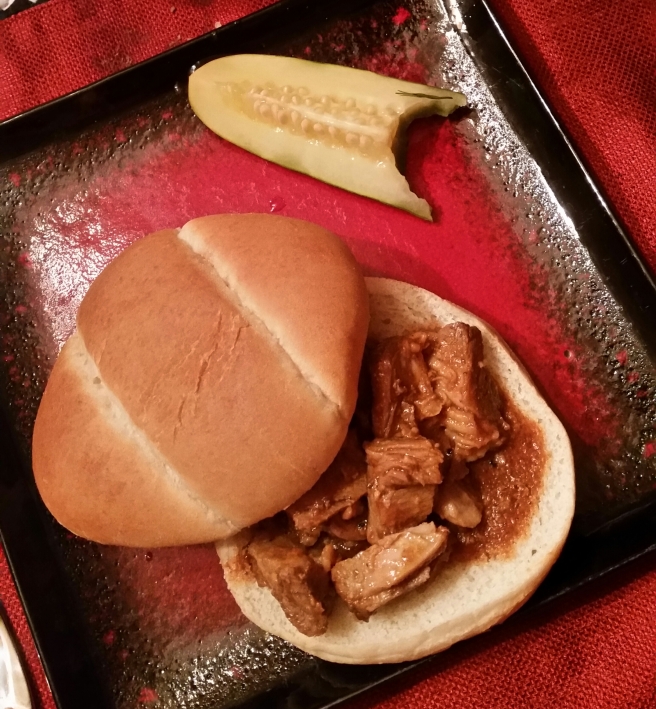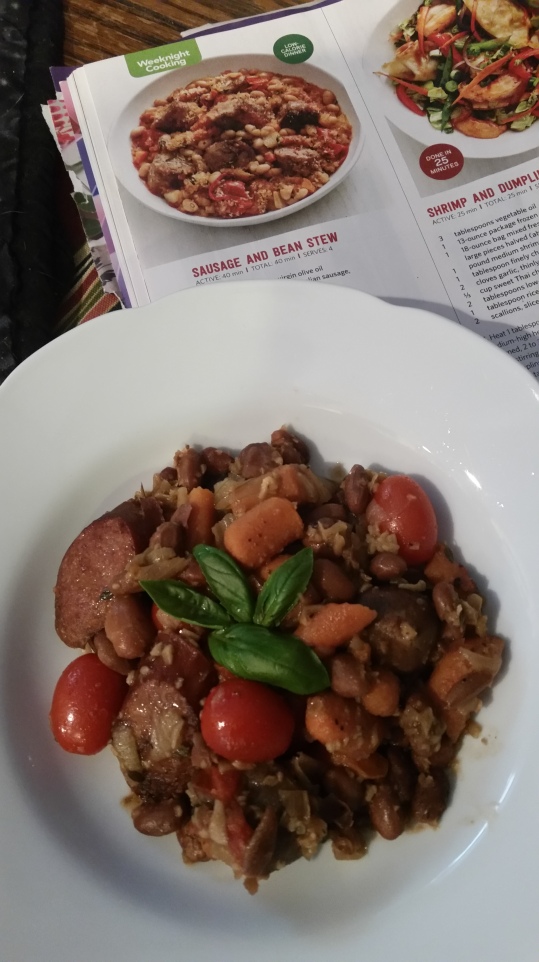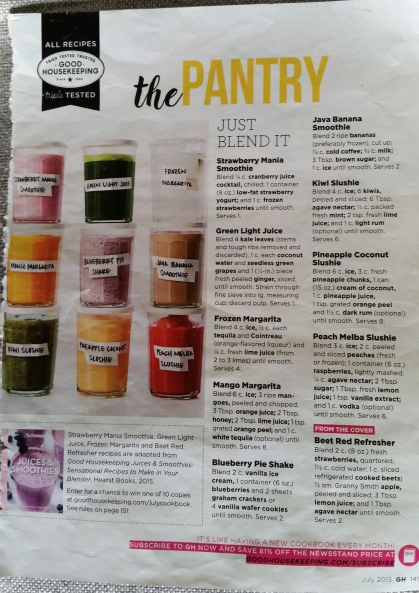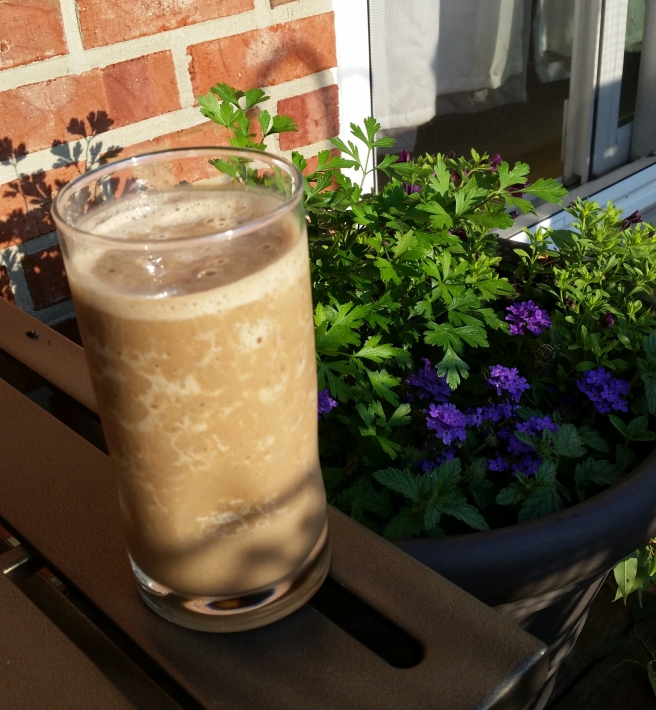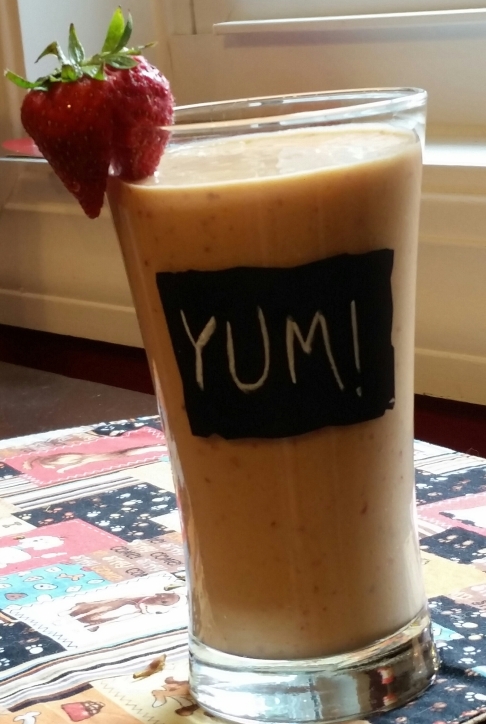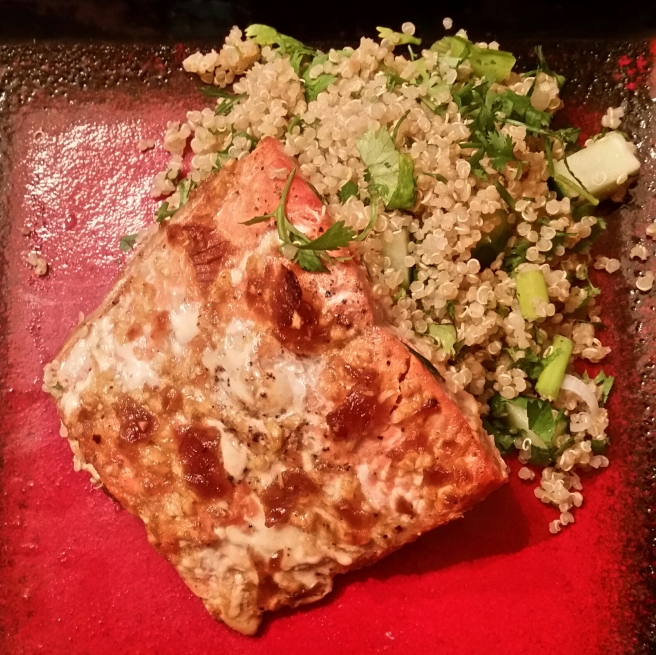I’ve been cooking up a storm, but back to school is upon us, and we’ve had some family stuff going on, so time has been a precious commodity. I just haven’t had the time or energy to write up my creations. But my favorite cooking season is coming, and with it comes soup, stew, chili, roasts, and a hundred other possibilities. During the summer I cook most days, but once the work schedule is back to normal, most of my major cooking happens on the weekends. Sometimes, since cooking is my therapy, I do have a burst of energy on a weeknight and get a few things done. Last night was one of those nights, and cake makes everything better.
I made this masterpiece once before for a dinner and games party we were attending about a month ago. The recipe is from Good Housekeeping’s June 2016 issue. It surprised me that it was so recent– I don’t remember tearing out the page, and I couldn’t even tell why I pulled it; the other recipes included cocktails and a tzatziki sauce, which are also right up my alley. But I’m sure glad I tried this recipe, because it’s a winner.
http://www.goodhousekeeping.com/food-recipes/a38865/upside-down-cake-recipe/
When you flip this cake out of the skillet, the gorgeous summer fruit will be on display. Try using the following measurements for the stone fruit of your choice:
1 1/2 lbs. peaches, peeled, halved and cut into eighths OR
3/4 lb. cherries, pitted and halved OR
1 1/2 lbs. plums, halved and cut into eighths
TOTAL TIME: 1:15
Ingredients
- 3 tbsp. plus 1/2 c. (1 stick) butter, softened
- 1/2 c. packed light brown sugar
- Choice of fruit (see above for measurements)
- 1 1/2 c. all-purpose flour
- 2 tsp. baking powder
- 1/4 tsp. salt
- 1 c. granulated sugar
- 3 large eggs
- 1 tbsp. vanilla extract
- 1/2 c. whole milk
Directions
- Preheat oven to 350 degrees F.
- In 12″ heavy skillet with oven-safe handle, melt 3 tablespoons butter on medium, swirling to coat side of pan. Sprinkle brown sugar evenly over butter and continue to cook 1 minute. Remove from heat. Add fruit, cut sides down, to fill entire bottom of skillet.
- In a large bowl, whisk flour, baking powder, and salt. In another large bowl, with mixer on medium speed, beat remaining 1/2 cup butter and granulated sugar until light and fluffy, scraping side of bowl occasionally. Beat in eggs, 1 at a time, then vanilla until well blended. With mixer on low, beat in flour mixture and milk, alternating, until just blended.
- Pour batter over fruit in skillet; gently spread into even layer. Bake 35 to 40 minutes or until toothpick inserted into center comes out clean. Cool cake in skillet on wire rack 15 minutes. Loosen sides of cake from pan with mini offset spatula or paring knife.
- Place large serving platter over skillet. Carefully invert cake onto platter and remove skillet; cool slightly to serve warm or cool 2 hours and serve at room temperature.
The first cake I made with plums, which I picked up on clearance at Woodman’s. I felt like cutting the fruit into eighths was too large, but I followed the directions for a change instead of following my instincts. (Turns out eighths was perfect, and I’ll explain why in a minute). The only skillet we have that we know is oven-proof is cast iron, so that’s what I used. The butter and brown sugar melted beautifully, and I managed to arrange the fruit quite artfully. The stone fruit is recommended in this cake because it has the density to stand up the the hot pan in step one, as well as 40 minutes in the oven in step 4. Leaving it in large slices helps keep it from disintegrating while baking. I used 5 plums, and they were on the large side, so the slices looked pretty thick.
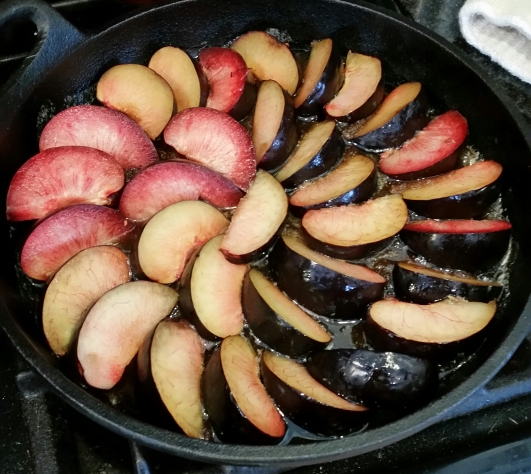
The cake batter came together perfectly. It is a thicker consistency, more like a pound cake batter, so it took some careful spreading to get it to cover the fruit without moving the slices around. I think the cake baked for about 35 minutes. I was worried that it would bubble over, but it rose just enough and stayed exactly put (measure your baking powder precisely, and it wouldn’t hurt to line the bottom of the oven with foil or a baking sheet just in case). The cake turned the most beautiful golden brown, but it looked very dry. Don’t worry! Once you flip the cake out of the skillet, it is sweet, moist, and gorgeous!
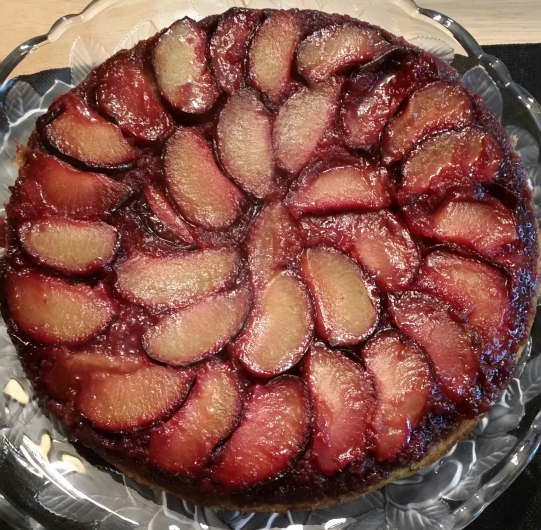
I wouldn’t change one thing about this recipe, and I can’t begin to describe how it tastes. Sweet and caramel-y, but well-balanced from the neutral flavor of the cake (shocking to me, because a cup of sugar seems like a lot for the volume of batter produced. I made this cake again for no occasion at all, except that I bought some peaches at the farmer’s market and wanted to see if my first attempt was beginner’s luck.
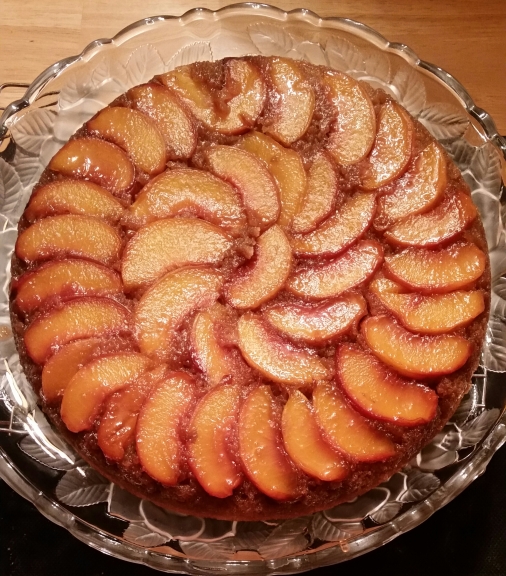
It was not beginner’s luck! This cake is so user-friendly, but I have to give a shout-out to Husband, because flipping this pie out of the cast iron definitely takes four hands. Tendinitis has weakened one of my wrists, and I just don’t trust that I’d be able to handle the weight of the skillet and the giant glass platter on my own. So Husband flipped and I supported the platter as the cake released (2 for 2 with nothing sticking in the pan). Make this cake! Because it’s easy, because it’s beautiful, because it’s delicious. Because it’s the end of summer and the fresh fruit is waning. But mostly, because it’s cake!
